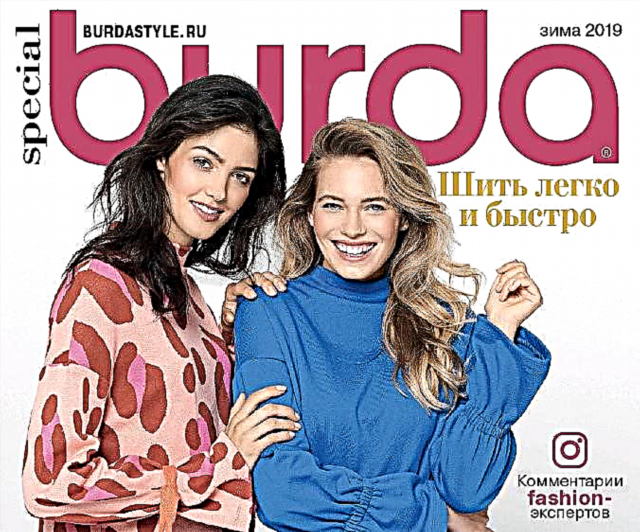Share
Pin
Tweet
Send
Share
Send
In the USSR, when the shortage of goods was actually the norm of the life of Soviet people, people had to somehow spin. And the proverb - “a ruse for inventing cunning” - was the absolute reality of that time.

Photo: pixabay
Many people know from the stories of their parents, grandparents, great-grandmothers and great-grandfathers what tricks and inventions they had to go to at least somehow deal with the deficit: they remade, altered, found a new and sometimes even completely unusual for specific things and objects application. Now, of course, few people are interested in this, except as a historical fact, but then, in conditions of an almost total deficit, this was the only way out.
But it’s still interesting to learn about the alterations that people resorted to in Soviet times, not for the sake of implementing and realizing some unusual creative idea, but exclusively for custom purposes.
New life of old things
In Soviet times, things were treated very carefully, even if they had served their term long ago, they rarely threw away something. More often than not, old things found new application. A very popular alteration of that time is a change of coat or some other thing. It is clear that outer clothing, if you do not take care of it and do not care for it, wears out over time. But such products, as a rule, were always sewn on a lining, due to which the wrong side retained its appearance much longer than the front one. Therefore, many turned the coat and changed it, changing the seamy side and the front side. As a result of this trick, the thing served for several more seasons. Or, using the same method, they sewed a completely new thing (sarafans and skirts) from the old coat, using the wrong side of the fabric as the front.What can be done from an old coat?
Of course, other things were altered, and not just for children. The fabrics were of good quality, and the new thing did not look like a remake at all.

Photo: carmine.canalblog.com; mywesternheart.com
Jeans for the Soviet man were the most coveted and most inaccessible item of clothing. The owners of this treasure belonged to jeans with great trepidation. They literally carried to the holes. But even here they were in no hurry to part with them. The most hit alteration from old jeans - there was a skirt! The upper part of the jeans was cut off above the step seam and a frill was sewn to it or a skirt made of another fabric was extended.
How to sew a large beach bag from old jeans: a master class

Pictured is a Biflex turtleneck

Turtleneck swimsuit from the previous photo
Things from the Birch shop were valued no less than jeans. Therefore, they had a second life. Biflex super-turtlenecks subsequently changed to cool swimsuits! Since it was almost impossible to buy ready-made, and the quality of those that came across for sale left much to be desired.
In addition, new things were altered.
For example, men’s shirts of great poplin were bought in huge sizes and beautiful summer dresses or Tatyana skirts with a top or a T-shirt were sewn from two shirts.
It was worth it cheaply, and the outfits were chic.
Dress from a man's jacket with his own hands: a master class
Soviet patchwork - one needlewoman took 2-3 jammed sweaters, boldly cut them into pieces of different sizes and then sewed very beautiful things from them. This later led her to the theater, where she worked as a dresser.
And one more, perhaps, the most amusing and unusual alteration.The quality of the fabric from which the underwear was sewn was very GOST in those years. So, one lady bought warm knickers from gray and beige thick knitwear, completely ripped them open and then cut out new details and sewed something like modern sweatshirts.
Knitting
Jacquard products, rugs and light blankets loosened and knitted beautiful cardigans from these threads.
In the photo, a pullover from dad's sweater
Knitwear was often loosened and tied up with new products, especially from adult items - children and teenagers. And to hide that a new sweater had already been such, repainted yarn.
From dratva (coarse linen threads for repairing shoes) crocheted tablecloths that still live and delight their hostesses.
DIY woven twine seat for stool
Ladies and shopping bags were knitted from a cotton rope (twine).
One dressmaker from crimped scraps (and this was the coolest material in those days) knitted wonderful home-made color slippers.


Unnecessary knitted sweaters, pullovers and other things were cut into strips, tied to each other, wound into balls and crocheted round rugs and seats on stools.
Do-it-yourself rug
Linens

Camouflage overalls for winter hunting were sewn from old white sheets. Great camouflage turned out.
Of the two old duvet covers, one was sewn new.
Not only sewing
Black elastic tights were such a scarce commodity that it was easier to color the body. To do this, they bought black dye and in the old pan they cooked “new” tights on gas.
Simple textile slippers from cooperative stores were decorated with hand embroidery.
- 1
- 2
- 3
- 4
Wide nylon bows decorated dresses instead of lace. And from pleated bows, usually they were long and wide, they sewed tiered fluffy mini-skirts.
A very creative way to update a thing and make it smart is to embroider a sweater or pullover with New Year's rain. It turned out a kind of a la lurex.
Raincoats with a hood were sewn from a rolled covering polymer web.

Flooring. Photo: wikipedia.org
Some craftsmen made a lawn mower from a polisher. A floor polisher is a machine for cleaning, polishing or rubbing various non-carpet floor coverings. In the USSR, the term "polisher" was applied to various manual, mechanical and electric machines for cleaning floors.
Worn insoles were carved from the bootlegs of old suede boots and a cygeik fur coat.
It was difficult with building materials in the 70s, so for upholstery of country houses and sheds on 6 acres, boards from wooden boxes (containers) and pallets were used.
Of course, if they didn’t hand over empty glass bottles, they would make borders for flower beds — they would dig bottles with the neck into the ground.
Many have heard of the famous Soviet double boiler. Moreover, this item was collapsible, and it was very simple to use - a colander was placed in a deep pan with water, for example, cutlets and this whole structure were covered with a lid.

In old kapron stockings stored onions.
Of candy wrappers from chewing gums and chewing gums, origami curtains were made for openings without doors. To do this, candy wrappers from candies were turned into tubes, and then weaved into curly stripes with each other.

Photo: skiptomylou.org
Panama huts were made from newspapers and used during repairs when painting ceilings, for example.
What can be done from old ties: a master class
In the absence of the Internet, mail solved the problem of remote communication. People exchanged letters and parcels, which were usually accompanied by beautiful greeting cards.They were carefully stored, and when there were too many postcards accumulated, gift boxes-packages and caskets were made of them.
All kinds of jewelry was made from the colored wire, which was taken out of building cables - rings and bracelets made using the macrame technique. Of the beautiful, unnecessary beads, small pupae were made.
And finally, another, simple Soviet recipe for beauty. The remnants of lipsticks of different colors were carefully removed from the tubes, placed in a small container, heated to slightly melt the mass. Then everything was thoroughly mixed and lipstick with a new color was obtained from the residues.
Material prepared by Julia Dekanova
Photo from the personal archive of the author
Share
Pin
Tweet
Send
Share
Send



